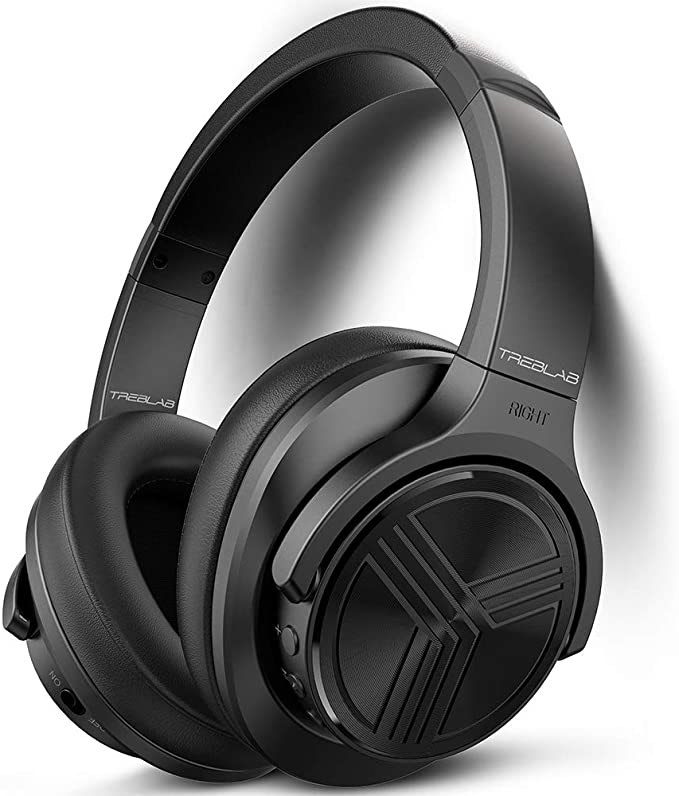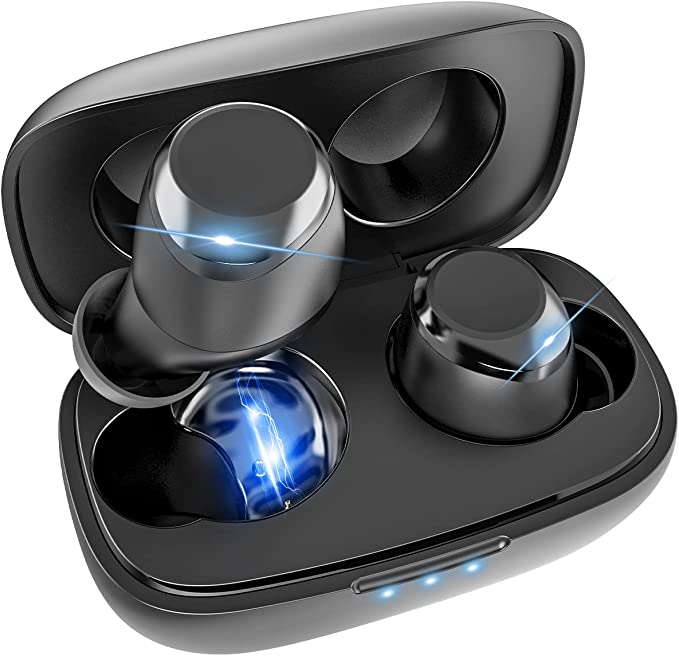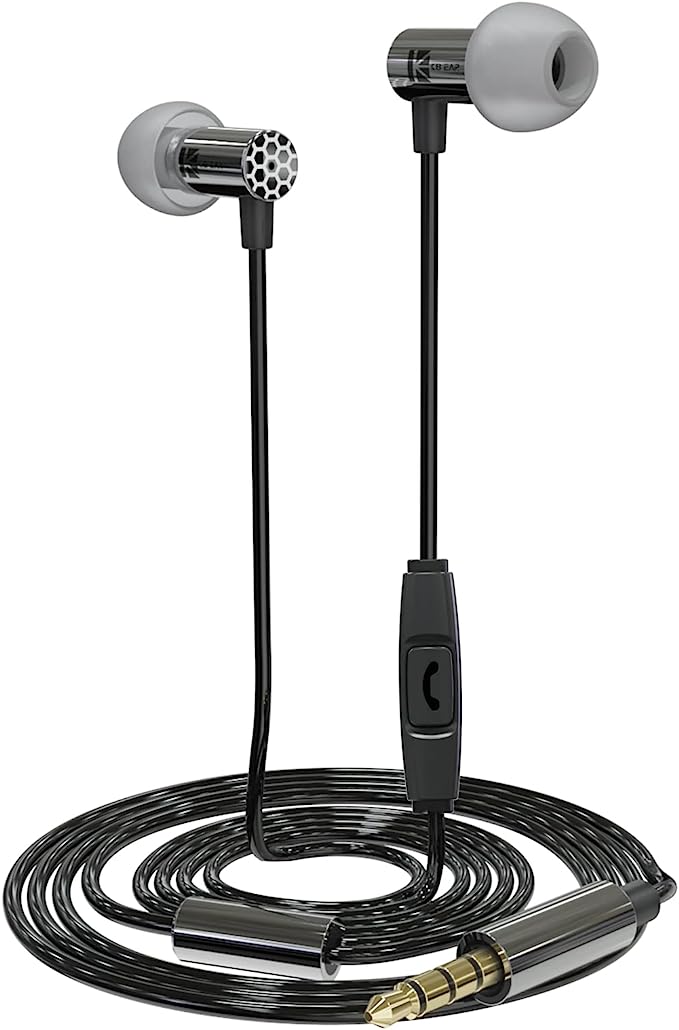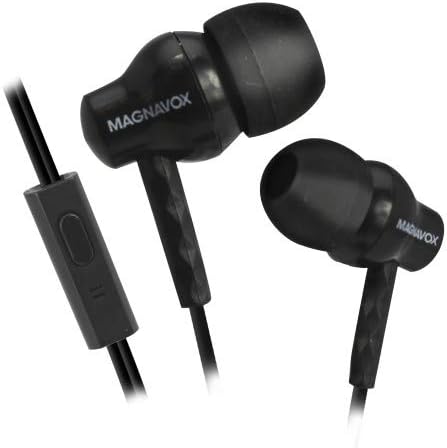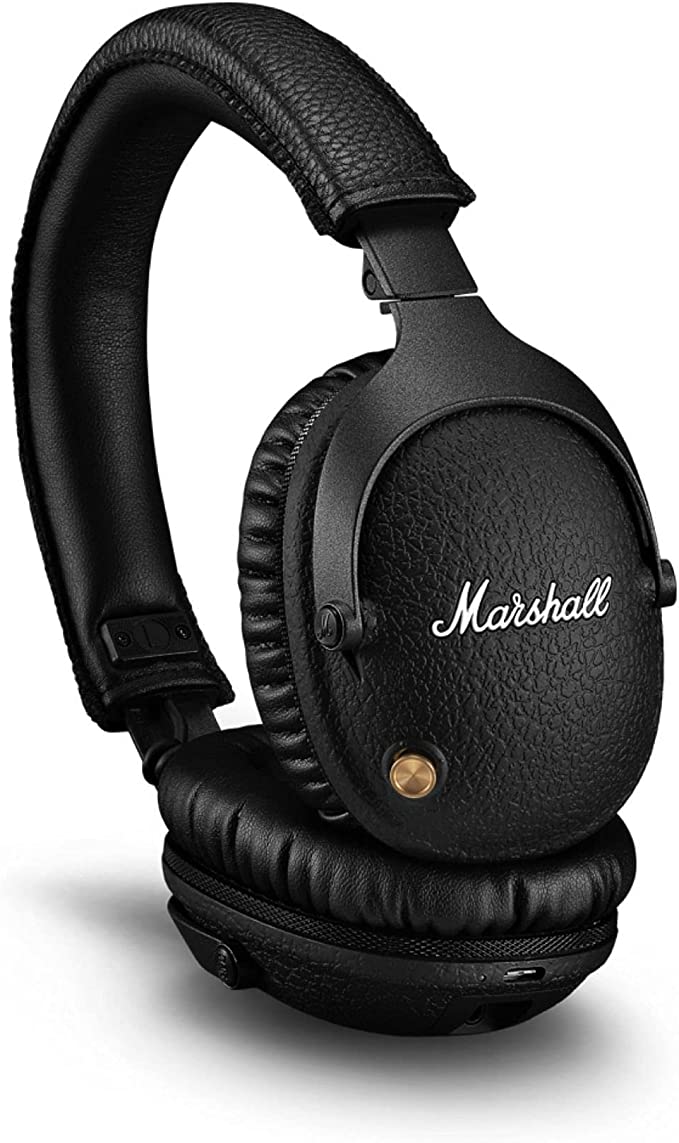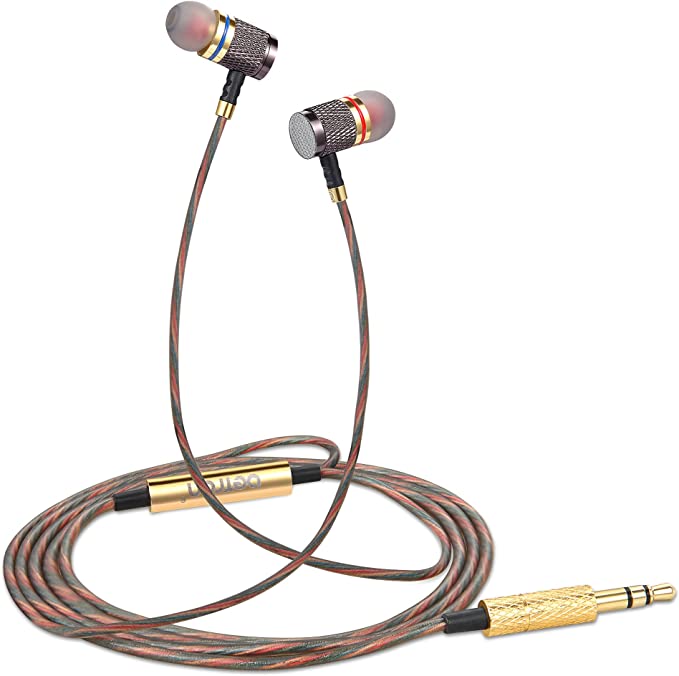Wireless Express WE-EB: The Budget-Friendly Bluetooth Earbuds for Casual Listening
Update on July 3, 2025, 3:06 a.m.
Take a moment and try to recall the visceral frustration. That familiar dance of untangling a web of headphone wires, a tiny, daily battle against a self-knotting hydra living in your pocket. For decades, this was the universal tax on personal audio. Then, true wireless earbuds arrived, promising a seamless, cable-free utopia—a promise that initially came with a hefty price tag.
But technology, like water, always seeks its lowest level. So, let me ask you a question. What is the absolute floor for this wireless freedom? Fifty dollars? Twenty? What if I told you it was under ten dollars?
On my desk sits a small, unassuming black plastic case containing a pair of Wireless Express WE-EB earbuds. The online price tag reads a staggering $9.93. The user reviews are, to be charitable, mixed. One user succinctly notes they “die fast,” the connection “cuts out,” and the “sound quality lacks a lot especially with bass.” This isn’t a product review, nor is it a recommendation. This is a detective story. This humble object is our key piece of evidence, and our investigation is into a profound question: In the world of complex electronics, how is a ten-dollar miracle even possible? The answer, it turns out, is a masterclass in the art of engineering compromise.

The Ghost in the Machine: Bluetooth’s Royal Past and Humble Present
Before we can even talk about sound, we have to talk about the invisible tether that holds it all together. The connection itself. Most users will see “Bluetooth 5.0” listed in the specifications and nod approvingly. It sounds modern. But the real story is more fascinating. Bluetooth technology, officially born in 1998 by the Bluetooth Special Interest Group (SIG), was whimsically named after Harald “Bluetooth” Gormsson, a 10th-century Viking king famed for uniting the disparate tribes of Denmark. The name was fitting; the technology’s goal was to unite a disparate world of devices.
For our ten-dollar specimen, the crucial chapter in this history was written in 2016 with the release of the Bluetooth 5.0 standard. This wasn’t just another incremental update; it was the “Big Bang” for low-cost wireless devices. It introduced a feature that is the lifeblood of every true wireless earbud: Bluetooth Low Energy, or BLE.
Imagine your old wireless devices were constantly shouting, “Are you there?!” at your phone, draining power with every query. BLE changed the game. It allows the earbuds to enter a deep sleep, sipping power by whispering “I’m here” only intermittently. This is the sole reason a tiny battery can offer over 100 hours of standby time. But here, we encounter our first, critical compromise. While Bluetooth can transmit data, the quality of that data is governed by a codec—an algorithm that compresses and decompresses the audio. All Bluetooth audio devices are required to support the baseline codec, the Sub-band Codec (SBC). Think of SBC as the public transportation of audio: it gets the job done, but it’s often crowded, lossy, and not the most elegant ride. It’s a bottleneck that puts a hard ceiling on audio fidelity, regardless of how good the rest of the hardware is. For a ten-dollar earbud, supporting anything more advanced (like AAC or aptX) is an unaffordable luxury.

The Singer, Not the Song: Why Ten-Dollar Sound is Ten-Dollar Sound
This brings us to the most subjective, yet most criticized, aspect: the sound. That user review lamented the lack of bass. To understand why, picture this: Bluetooth 5.0, using the SBC codec, is a competent messenger delivering a musical score to a singer. But the singer, in this case, is the earbud’s “dynamic driver”—the tiny speaker that actually produces the sound. And in a ten-dollar earbud, that singer is a talented amateur at best, not a professionally trained opera star.
A dynamic driver is a marvel of miniaturization: a magnet, a voice coil, and a diaphragm that vibrates to create sound waves. The quality of that sound is dictated by the laws of physics. Rich, deep bass requires the diaphragm to move a significant amount of air, which calls for a strong magnet and a rigid, yet lightweight, diaphragm material. High-frequency clarity demands the diaphragm be incredibly responsive and stop on a dime.
In premium headphones, you’ll find powerful neodymium magnets and exotic diaphragm materials like beryllium or graphene. In our ten-dollar specimen, the magnet is likely a standard ferrite, and the diaphragm a simple mylar plastic. It’s not that the engineers are untalented; it’s that they are operating under brutal cost constraints. They cannot afford a better singer. The result is a frequency response that struggles at the extremes. The low-end bass feels more like a polite tap than a resonant punch, and the highest frequencies can sound indistinct—precisely what the user feedback described. The musical score is delivered, but the performance is compromised.

The Power Play: A Game of Milliamps and Pennies
The promise of “>4 hours of music” is another battlefield of compromise. Inside each earbud and the case, there’s a Lithium-Polymer (Li-Po) battery. Li-Po chemistry is key to modern portables because it’s lightweight and can be molded into custom shapes. But batteries are one of the more expensive components in any electronic device.
An engineer designing a premium product might select a battery to provide 8-10 hours of playback. The engineer of a ten-dollar earbud works backwards. They are given a budget for the battery—perhaps only a few cents—and must find one that fits the physical space and provides just enough power to be considered functional. The “four-hour” figure is likely the absolute best-case scenario: tested at a moderate volume, with a fresh battery. The user reporting it “dies fast” is likely listening louder, or the battery has already begun its inevitable, slow chemical decay.
The standby time of over 100 hours, juxtaposed with the short playback time, beautifully illustrates the efficiency of BLE. In standby, the earbuds are doing almost nothing. But the moment you hit play, the audio processor, amplifier, and drivers roar to life, and the energy consumption skyrockets. It’s the difference between a car idling at a stoplight and accelerating onto a highway.
The Invisible Cuts: Antennas, Plastics, and the Price of ‘Good Enough’
Perhaps the most fascinating compromises are the ones you cannot see. A stable Bluetooth connection doesn’t just depend on the chip; it depends critically on the antenna design. A well-designed antenna is carefully tuned and positioned to avoid interference from the other components and the user’s own body. A poorly designed one, or one made with the cheapest possible materials, is why a user might experience signal “cut outs” when they turn their head or put their phone in their back pocket.
Then there’s the plastic casing itself. The precision of the molds determines how well the parts fit together, how the lid of the case snaps shut. The quality control on the assembly line determines how many units with minor defects are allowed to ship. Each of these steps represents a decision point for an engineer balancing cost against quality. Every fraction of a cent saved on a looser tolerance or a faster, less thorough testing protocol contributes to hitting that $9.93 price point.
The ten-dollar earbud, then, is not a miracle. It is a monument to mature technology and ruthless efficiency. It is the end result of a thousand tiny, calculated decisions, a process of stripping a product down to its absolute essence. It’s an engineering marvel, not of peak performance, but of accessibility.

For the audiophile, this product is anathema. But for the student who needs to listen to a lecture on the bus, the gig worker wanting a podcast to fill the hours, or the child getting their first taste of wireless audio, it is a door-opener. It provides a function that was, just a few years ago, a luxury. It is a testament to the relentless democratization of technology.
So, the next time you encounter an impossibly cheap piece of electronics, don’t just see a price tag. See the invisible hand of the engineer. See the ghost of a Viking king, the chemistry of a battery, the physics of a vibrating diaphragm, and a thousand microscopic compromises. You’ll be seeing the very art that shapes our modern world.







